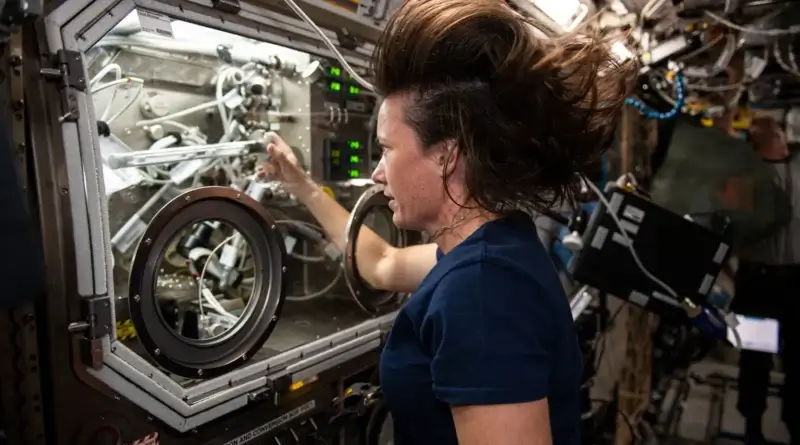The space agency says that the industry alone will not be able to move forward and it is required to cooperate with the government and academia. This can help solve bottlenecks that slow down progress in the field

Manufacturing in space offers technological innovation, progress and discoveries that are not limited by Earth's gravitational forces. To realize the full potential of manufacturing in low Earth orbit (LEO), industry leaders gathered at Stanford University in March 2023 for the first Space Semiconductor Manufacturing Workshop to discuss the past, present and future of the field.
A detailed report on the findings of the workshop is now being published. This workshop brought together a community of experts to explore the rich history of semiconductor manufacturing on Earth and manufacturing methods in space. The purpose of the workshop was to identify the goals for 2030 that must be realized to make semiconductor manufacturing in space a reality by 2050. The consensus was that the field should take advantage of the remaining years to reduce risks from investments by semiconductor companies and private investors. To do this, the community needs to obtain more data through promising semiconductor research and development in LEO (Low Earth Orbit). This activity will include the entire range of experiments in semiconductor manufacturing steps such as crystal growth, wafer processing, epitaxial growth, circuit design, etc.
Beyond the synthesis of insights from the workshop, the report describes the current state of semiconductor manufacturing in space and creates a path for the future. Over the past three decades, there has been a decline in the discovery and growth of new crystals (DGCM) in the United States, which has significantly slowed down the semiconductor industry. This report intends to return the attention of the United States to semiconductor manufacturing in space and awaken the field from hibernation.
The sections of the vision for 2050 and the recommendations influenced by industry experts and history, offer practical solutions that can wake up the semiconductor industry from almost 25 years of inactivity in space. The advantages of semiconductor manufacturing in LEO are clear. Earth's gravitational forces are significant obstacles to the rapid and efficient production of semiconductors. Beyond the scientific benefits of microgravity, there are significant practical benefits to integrating manufacturing in LEO into the supply chain. Moving this industry into space is the only path forward if the United States wants to keep pace with the developing technological race around the world.
This report identifies opportunities to strengthen US leadership in semiconductor manufacturing in LEO. According to one of the authors of the report, the industry urgently needs a roadmap for both immediate and long-term financing strategies that can support various components. Long-term government investment can help reduce additional private investment, and funding student scholarship programs will promote workforce development. Beyond the need for funding, the industry needs a dedicated collaborative ecosystem.
NASA's dedicated website for space manufacturing
More of the topic in Hayadan:
- Engineers demonstrate the capability of superfast materials
- Extensive graphene coating on copper - the way to faster electronic components
- An innovative method for manufacturing extremely thin and flexible electronic components
- The satellite communication company Stixpay will be issued on the Tel Aviv Stock Exchange
- Appendices to the article: Secrets for Sale - Strategic Aspects of Commercial Remote Sensing Satellites

2 תגובות
From the beginning, the whole matter of making crystals in space was an excuse based on a lie. Run because everyone, everyone knew it was impractical and there is no economic chance to produce crystals in space. It is a lie that it is known from research that producing crystals in a high-speed centrifuge creates better crystals than crystals formed in 1G gravity. So it is not clear what microgravity will do to the quality of the crystal, because until today they have not been able to produce a crystal in space, for over 20 years the station in space and nothing, nothing. just what? All the NASA scientists could not find a better reason to build the space station. The space station simply does not have, never had and never will have any industrial use whatsoever. nothing. So how do you get a budget from the Senate and the House of Representatives? Inventing a trick.
I would appreciate an explanation because it is not clear to me at all.
Chips today are produced in sizes of a few nanometers.
What effect does gravity have at these sizes?
Is it not completely negligible anymore?